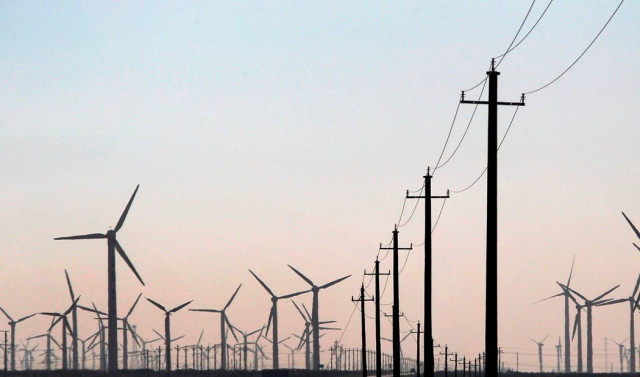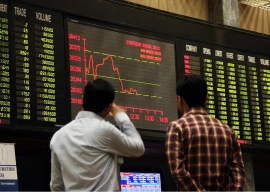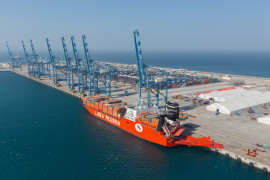
However, the task was not that easy as the government had not only to develop new power plants and ramp up gas supplies, it was also required to address the constraints afflicting the energy chain that were impeding supplies to consumers.
Though the country had adequate electricity production capacity, the outdated transmission and distribution system had been a major stumbling block that could not transmit the available electricity.
Simultaneously, the government started targeting the three areas of power generation, transmission and distribution.
It also strived to improve collection of power consumption bills, which had not been satisfactory because of rampant theft, and bring down transmission and distribution losses.
Indeed, a boon to the government came in the shape of China-Pakistan Economic Corridor (CPEC) under which Beijing promised to build $33 billion worth of power generation and transmission projects to bridge the runaway shortfall in Pakistan.
Power generation
Since mid-2013, the government has completed 47 power generation projects, adding 8,694 megawatts of electricity to the installed capacity.
Data breakdown shows that work on 10 projects were completed in 2013 which started supplying 474MW to the national grid. Next year, work was finished on seven more projects that added 1,422MW to the system. In 2015, six projects came on stream that started producing 717MW and next year 10 more projects came on line with 920MW capacity.
Year 2017 showed a giant leap forward that gave a massive boost to electricity generation with the completion of 14 projects having designed production capacity of 5,162MW.
Among these were liquefied natural gas (LNG)-fired power plants in Bhikki and Haveli Bahadur Shah, a coal-fired plant in Sahiwal, Chashma-4 nuclear power plant and a power plant at Port Qasim.
Renewable energy sources also had their share in the progress.
Bagasse and wind power projects added 334MW of electricity to the national grid in the just ended calendar year 2017.
Transmission lines
Though new power plants were gradually coming on line, the transmission lines were nowhere to be seen in many cases. The existing overburdened transmission network collapsed a number of times in the past as it could not bear the load.
Of late, projects for augmenting the existing transmission system and laying new transmission lines have been undertaken to make it reliable and ward off the threat of frequent tripping of feeders.
Since 2014, the National Transmission and Despatch Company (NTDC) have executed scores of projects, mostly in Punjab. Of the total, work on four transmission line projects was completed in Balochistan, 12 projects in Sindh, 29 projects in Punjab, three in Khyber-Pakhtunkhwa and one in Azad Jammu and Kashmir (AJK). In the outgoing year, 19 projects were completed.
Circular debt
Despite all the encouraging developments, the inter-corporate debt, however, has long plagued the energy chain, thanks to a poor energy mix. The previous Pakistan Peoples Party (PPP) administration poured around Rs2 trillion into the power sector in the shape of subsidy, but could not resolve the problem. The present government too has faced the deepening challenge and despite repeated attempts, it has so far failed to bring it under control.
Estimates suggest that the circular debt has shot up above Rs450 billion. This is separate from around Rs400 billion of debt parked in a holding company.
Owing to the rising receivables, independent power producers (IPPs) even filed a case against Pakistan government in the international court for undue delay in the clearance of dues.
On the other hand, receivables of state-owned fuel supplier Pakistan State Oil have swelled to Rs316 billion. Among its clients, power producers are the major defaulters.
Gas supplies
Pakistan has been enduring acute gas shortages for years. In an effort to find a solution, the present government in a major policy shift turned to liquefied natural gas (LNG) imports to bridge the deficit.
Pakistan’s natural gas production has stood almost stagnant at 4 billion cubic feet per day (bcfd) for years, though over 500 million cubic feet per day (mmcfd) have been added from new discoveries during the tenure of the present government. The reason behind this is that a same volume of gas has depleted from the existing reserves.
Pakistan’s consumption demand is estimated at 6 bcfd, meaning the country needs to arrange 2 bcfd to plug the gap.
In the absence of domestically produced natural gas, particularly in winter, different sectors of the economy such as compressed natural gas (CNG) outlets and fertiliser manufacturing plants, which had no alternative fuel, had been shut earlier in Punjab.
However, these industries reopened after the start of LNG imports about two and a half years ago and the gas was also supplied to power plants to ensure uninterrupted electricity supply to industrial units.
To facilitate LNG imports, the government awarded the first LNG terminal contract to Engro and it became operational in March 2015. This terminal is now handling 600 mmcfd of LNG, up from the initial 400 mmcfd.
In the outgoing year, the government permitted Pakistan GasPort Limited to build another LNG terminal of the same 600mmcfd capacity. This terminal started running in the second half of November 2017.
On the transmission and distribution side, public gas utilities – Sui Northern Gas Pipelines and Sui Southern Gas Company – had additional capacity of only 400 mmcfd.
In order to streamline LNG supplies, the government directed the utilities to enhance their pipeline capacity, which in turn kicked off work and managed to increase the capacity by 1.2 bcfd.
The writer is a staff correspondent.
Published in The Express Tribune, January 1st, 2018.
Like Business on Facebook, follow @TribuneBiz on Twitter to stay informed and join in the conversation.


















COMMENTS
Comments are moderated and generally will be posted if they are on-topic and not abusive.
For more information, please see our Comments FAQ